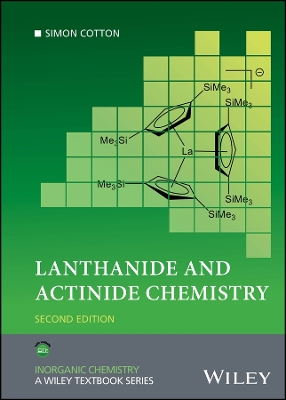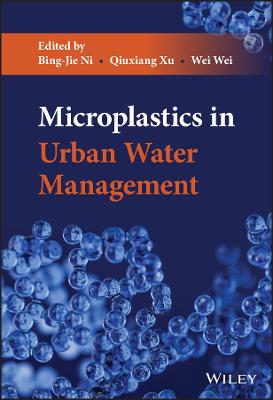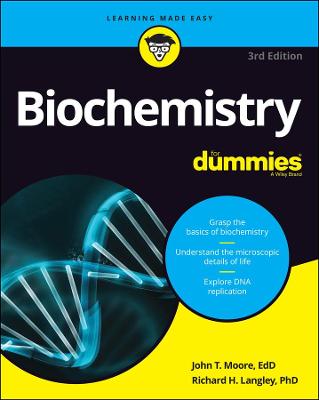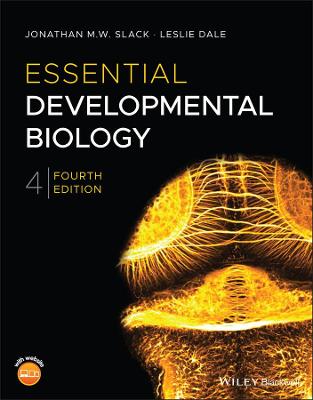Bioinorganic Chemistry
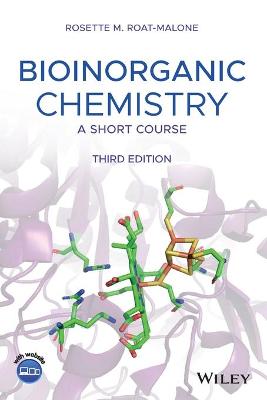 -15%
portes grátis
-15%
portes grátis
Bioinorganic Chemistry
A Short Course
Roat-Malone, Rosette M.
John Wiley & Sons Inc
04/2020
350
Mole
Inglês
9781119535218
15 a 20 dias
556
Descrição não disponível.
Preface xiii
Acknowledgments xvii
Biography xix
About the Companion Page xxi
1 Inorganic Chemistry and Biochemistry Essentials 1
1.1 Introduction 1
1.2 Essential Chemical Elements 1
1.3 Inorganic Chemistry Basics 3
1.4 Electronic and Geometric Structures of Metals in Biological Systems 4
1.5 Thermodynamics and Kinetics 13
1.6 Bioorganometallic Chemistry 16
1.7 Inorganic Chemistry Conclusions 22
1.8 Introduction to Biochemistry 22
1.9 Proteins 23
1.9.1 Amino Acid Building Blocks 23
1.9.2 Protein Structure 26
1.9.3 Protein Function Enzymes and Enzyme Kinetics 30
1.10 DNA and RNA Building Blocks 32
1.10.1 DNA and RNA Molecular Structures 33
1.10.2 Transmission of Genetic Information 40
1.10.3 Genetic Mutations and Site-Directed Mutagenesis 43
1.10.4 Genes and Cloning 44
1.10.5 Genomics and the Human Genome 46
1.10.6 CRISPR 47
1.11 A Descriptive Example: Electron Transport Through DNA 51
1.11.1 Cyclic Voltammetry 55
1.12 Summary and Conclusions 57
1.13 Questions and Thought Problems 57
References 58
2 Computer Hardware, Software, and Computational Chemistry Methods 63
2.1 Introduction to Computer-Based Methods 63
2.2 Computer Hardware 63
2.3 Computer Software for Chemistry 66
2.3.1 Chemical Drawing Programs 67
2.3.2 Visualization Programs 67
2.3.3 Computational Chemistry Software 68
2.3.3.1 Molecular Dynamics (MD) Software 70
2.3.3.2 Mathematical and Graphing Software 71
2.4 Molecular Mechanics (MM), Molecular Modeling, and Molecular Dynamics (MD) 71
2.5 Quantum Mechanics-Based Computational Methods 72
2.5.1 Ab-Initio Methods 72
2.5.2 Semiempirical Methods 73
2.5.3 Density Functional Theory and Examples 73
2.5.3.1 Starting with Schrodinger 74
2.5.3.2 Density Functional Theory (DFT) 75
2.5.3.3 Basis Sets 76
2.5.3.4 DFT Applications 78
2.5.4 Quantum Mechanics/Molecular Mechanics (QM/MM) Methods 81
2.6 Conclusions on Hardware, Software, and Computational Chemistry 81
2.7 Databases, Visualization Tools, Nomenclature, and other Online Resources 82
2.8 Questions and Thought Problems 84
References 85
3 Important Metal Centers In Proteins 89
3.1 Iron Centers in Myoglobin and Hemoglobin 89
3.1.1 Introduction 89
3.1.2 Structure and Function as Determined by X-ray Crystallography and Nuclear Magnetic Resonance 92
3.1.3 Cryo-Electron Microscopy and Hemoglobin Structure/Function 95
3.1.3.1 Introduction 95
3.1.3.2 Cryo-Electron Microscopy Techniques 95
3.1.3.3 Structures Determined Using Cryo-Electron Microscopy 98
3.1.4 Model Compounds 100
3.1.5 Blood Substitutes 102
3.2 Iron Centers in Cytochromes 102
3.2.1 Cytochrome c Oxidase 103
3.2.2 Cytochrome c Oxidase (CcO) Structural Studies 105
3.2.3 Cytochrome c Oxidase (CcO) Catalytic Cycle and Energy Considerations 108
3.2.4 Proton Channels in Cytochrome c Oxidase 110
3.2.5 Cytochrome c Oxidase Model Compounds 113
3.3 Iron-Sulfur Clusters in Nitrogenase 120
3.3.1 Introduction 120
3.3.2 Nitrogenase Structure and Catalytic Mechanism 121
3.3.3 Mechanism of Dinitrogen (N2) Reduction 123
3.3.4 Substrate Pathways into Nitrogenase 127
3.3.5 Nitrogenase Model Compounds 130
3.3.5.1 Functional Nitrogenase Models 130
3.3.5.2 Structural Nitrogenase Models 135
3.4 Copper and Zinc in Superoxide Dismutase 137
3.4.1 Introduction 137
3.4.2 Superoxide Dismutase Structure and Mechanism of Catalytic Activity 139
3.4.3 A Copper Zinc Superoxide Dismutase Model Compound 143
3.5 Methane Monooxygenase 144
3.5.1 Introduction 144
3.5.2 Soluble Methane Monooxygenase 145
3.5.3 Particulate Methane Monooxygenase 148
3.6 Summary and Conclusions 152
3.7 Questions and Thought Problems 153
References 154
4 Hydrogenases, Carbonic Anhydrases, Nitrogen Cycle Enzymes 165
4.1 Introduction 165
4.2 Hydrogenases 166
4.2.1 Introduction 166
4.2.2 [NiFe]-hydrogenases 168
4.2.2.1 [NiFe]-hydrogenase Model Compounds 171
4.2.3 [FeFe]-hydrogenases 174
4.2.3.1 [FeFe]-Hydrogenase Model Compounds 179
4.2.4 [Fe]-hydrogenases 181
4.2.4.1 [Fe]-Hydrogenase Model Compounds 181
4.3 Carbonic Anhydrases 182
4.3.1 Introduction 182
4.3.2 Carbonic Anhydrase Inhibitors 183
4.4 Nitrogen Cycle Enzymes 186
4.4.1 Introduction 186
4.4.2 Nitric Oxide synthase 188
4.4.2.1 Introduction 188
4.4.2.2 Nitric Oxide Synthase Structure 188
4.4.2.3 Nitric Oxide Synthase Inhibitors 189
4.4.3 Nitrite Reductase 194
4.4.3.1 Introduction 194
4.4.3.2 Reduction of Nitrite Ion to Ammonium Ion 194
4.4.3.3 Reduction of Nitrite Ion to Nitric Oxide 195
4.5 Summary and Conclusions 207
4.6 Questions and Thought Problems 207
References 208
5 Nanobioinorganic Chemistry 213
5.1 Introduction to Nanomaterials 213
5.2 Analytical Methods 215
5.2.1 Microscopy 216
5.2.1.1 Scanning Electron Microscopy (SEM) 216
5.2.1.2 Transmission Electron Microscopy (TEM) 216
5.2.1.3 Scanning Transmission Electron Microscopy (STEM) 218
5.2.1.4 Cryo-Electron Microscopy 218
5.2.1.5 Scanning Probe Microscopy (SPM) 218
5.2.1.6 Atomic Force Microscopy (AFM) 219
5.2.1.7 Super-Resolution Microscopy and DNA-PAINT 220
5.2.2 Forster Resonance Energy Transfer (FRET) 221
5.3 DNA Origami 222
5.4 Metallized DNA Nanomaterials 224
5.4.1 Introduction 224
5.4.2 DNA-Coated Metal Electrodes 225
5.4.3 Plasmonics and DNA 225
5.5 Bioimaging with Nanomaterials, Nanomedicine, and Cytotoxicity 228
5.5.1 Introduction 228
5.5.2 Imaging with Nanomaterials 230
5.5.3 Bioimaging using Quantum Dots (QD) 233
5.5.4 Nanoparticles in Therapeutic Nanomedicine 233
5.5.4.1 Clinical Nanomedicine 235
5.5.4.2 Some Drugs Formulated into Nanomaterials for Cancer Treatment: Cisplatinum, Platinum(IV) Prodrugs, and Doxorubicin 236
5.6 Theranostics 239
5.7 Nanoparticle Toxicity 240
5.8 Summary and Conclusions 241
5.9 Questions and Thought Problems 241
References 242
6 Metals In Medicine, Disease States, Drug Development 247
6.1 Platinum Anticancer Agents 247
6.1.1 Cisplatin 249
6.1.1.1 Cisplatin Toxicity 249
6.1.1.2 Mechanism of Cisplatin Activity 250
6.1.2 Carboplatin (Paraplatin) 251
6.1.3 Oxaliplatin 251
6.1.4 Other cis-Platinum(II) Compounds 252
6.1.4.1 Nedaplatin 252
6.1.4.2 Lobaplatin 252
6.1.4.3 Heptaplatin 253
6.1.5 Antitumor Active Trans Platinum compounds 253
6.1.6 Platinum Drug Resistance 258
6.1.7 Combination Therapies: Platinum-Containing Drugs with Other Antitumor Compounds 260
6.1.8 Platinum(IV) Antitumor Drugs 262
6.1.8.1 Satraplatin 262
6.1.8.2 Ormaplatin 263
6.1.8.3 Iproplatin, JM9, CHIP 263
6.1.9 Platinum(IV) Prodrugs 264
6.1.9.1 Multitargeted Platinum(IV) Prodrugs 264
6.1.9.2 Platinum(IV) Prodrugs Delivered via Nanoparticles 266
6.2 Ruthenium Compounds as Anticancer Agents 267
6.2.1 Ruthenium(III) Anticancer Agents 267
6.2.2 Ruthenium(II) Anticancer Agents 269
6.2.3 Mechanism of Ruthenium(II) Anticancer Agent Activity 271
6.2.4 Ruthenium Compounds Tested for Antitumor Activity 271
6.3 Iridium and Osmium Antitumor Agents 274
6.4 Other Antitumor Agents 278
6.4.1 Gold Complexes 278
6.4.2 Titanium Complexes 278
6.4.3 Copper Complexes 279
6.5 Bismuth Derivatives as Antibacterials 281
6.6 Disease States, Drug Discovery, and Treatments 282
6.6.1 Superoxide Dismutases (SOD) in Disease States 282
6.6.2 Amyotrophic Lateral Sclerosis 287
6.6.3 Wilson's and Menkes Disease 291
6.6.4 Alzheimer's disease 296
6.6.4.1 Role of Amyloid ? Protein 296
6.6.4.2 Interactions of A? Peptides with Metals 298
6.6.4.3 Alzheimer's Disease Treatments 299
6.7 Other Disease States Involving Metals 302
6.7.1 Copper and Zinc Ions and Cataract Formation 302
6.7.2 As2O3 used in the Treatment of Acute Promyelocytic Leukemia (APL) 302
6.7.3 Vanadium-based Type 2 Diabetes Drugs 303
6.8 Summary and Conclusions 305
6.9 Questions and Thought Problems 306
References 308
Index 315
Acknowledgments xvii
Biography xix
About the Companion Page xxi
1 Inorganic Chemistry and Biochemistry Essentials 1
1.1 Introduction 1
1.2 Essential Chemical Elements 1
1.3 Inorganic Chemistry Basics 3
1.4 Electronic and Geometric Structures of Metals in Biological Systems 4
1.5 Thermodynamics and Kinetics 13
1.6 Bioorganometallic Chemistry 16
1.7 Inorganic Chemistry Conclusions 22
1.8 Introduction to Biochemistry 22
1.9 Proteins 23
1.9.1 Amino Acid Building Blocks 23
1.9.2 Protein Structure 26
1.9.3 Protein Function Enzymes and Enzyme Kinetics 30
1.10 DNA and RNA Building Blocks 32
1.10.1 DNA and RNA Molecular Structures 33
1.10.2 Transmission of Genetic Information 40
1.10.3 Genetic Mutations and Site-Directed Mutagenesis 43
1.10.4 Genes and Cloning 44
1.10.5 Genomics and the Human Genome 46
1.10.6 CRISPR 47
1.11 A Descriptive Example: Electron Transport Through DNA 51
1.11.1 Cyclic Voltammetry 55
1.12 Summary and Conclusions 57
1.13 Questions and Thought Problems 57
References 58
2 Computer Hardware, Software, and Computational Chemistry Methods 63
2.1 Introduction to Computer-Based Methods 63
2.2 Computer Hardware 63
2.3 Computer Software for Chemistry 66
2.3.1 Chemical Drawing Programs 67
2.3.2 Visualization Programs 67
2.3.3 Computational Chemistry Software 68
2.3.3.1 Molecular Dynamics (MD) Software 70
2.3.3.2 Mathematical and Graphing Software 71
2.4 Molecular Mechanics (MM), Molecular Modeling, and Molecular Dynamics (MD) 71
2.5 Quantum Mechanics-Based Computational Methods 72
2.5.1 Ab-Initio Methods 72
2.5.2 Semiempirical Methods 73
2.5.3 Density Functional Theory and Examples 73
2.5.3.1 Starting with Schrodinger 74
2.5.3.2 Density Functional Theory (DFT) 75
2.5.3.3 Basis Sets 76
2.5.3.4 DFT Applications 78
2.5.4 Quantum Mechanics/Molecular Mechanics (QM/MM) Methods 81
2.6 Conclusions on Hardware, Software, and Computational Chemistry 81
2.7 Databases, Visualization Tools, Nomenclature, and other Online Resources 82
2.8 Questions and Thought Problems 84
References 85
3 Important Metal Centers In Proteins 89
3.1 Iron Centers in Myoglobin and Hemoglobin 89
3.1.1 Introduction 89
3.1.2 Structure and Function as Determined by X-ray Crystallography and Nuclear Magnetic Resonance 92
3.1.3 Cryo-Electron Microscopy and Hemoglobin Structure/Function 95
3.1.3.1 Introduction 95
3.1.3.2 Cryo-Electron Microscopy Techniques 95
3.1.3.3 Structures Determined Using Cryo-Electron Microscopy 98
3.1.4 Model Compounds 100
3.1.5 Blood Substitutes 102
3.2 Iron Centers in Cytochromes 102
3.2.1 Cytochrome c Oxidase 103
3.2.2 Cytochrome c Oxidase (CcO) Structural Studies 105
3.2.3 Cytochrome c Oxidase (CcO) Catalytic Cycle and Energy Considerations 108
3.2.4 Proton Channels in Cytochrome c Oxidase 110
3.2.5 Cytochrome c Oxidase Model Compounds 113
3.3 Iron-Sulfur Clusters in Nitrogenase 120
3.3.1 Introduction 120
3.3.2 Nitrogenase Structure and Catalytic Mechanism 121
3.3.3 Mechanism of Dinitrogen (N2) Reduction 123
3.3.4 Substrate Pathways into Nitrogenase 127
3.3.5 Nitrogenase Model Compounds 130
3.3.5.1 Functional Nitrogenase Models 130
3.3.5.2 Structural Nitrogenase Models 135
3.4 Copper and Zinc in Superoxide Dismutase 137
3.4.1 Introduction 137
3.4.2 Superoxide Dismutase Structure and Mechanism of Catalytic Activity 139
3.4.3 A Copper Zinc Superoxide Dismutase Model Compound 143
3.5 Methane Monooxygenase 144
3.5.1 Introduction 144
3.5.2 Soluble Methane Monooxygenase 145
3.5.3 Particulate Methane Monooxygenase 148
3.6 Summary and Conclusions 152
3.7 Questions and Thought Problems 153
References 154
4 Hydrogenases, Carbonic Anhydrases, Nitrogen Cycle Enzymes 165
4.1 Introduction 165
4.2 Hydrogenases 166
4.2.1 Introduction 166
4.2.2 [NiFe]-hydrogenases 168
4.2.2.1 [NiFe]-hydrogenase Model Compounds 171
4.2.3 [FeFe]-hydrogenases 174
4.2.3.1 [FeFe]-Hydrogenase Model Compounds 179
4.2.4 [Fe]-hydrogenases 181
4.2.4.1 [Fe]-Hydrogenase Model Compounds 181
4.3 Carbonic Anhydrases 182
4.3.1 Introduction 182
4.3.2 Carbonic Anhydrase Inhibitors 183
4.4 Nitrogen Cycle Enzymes 186
4.4.1 Introduction 186
4.4.2 Nitric Oxide synthase 188
4.4.2.1 Introduction 188
4.4.2.2 Nitric Oxide Synthase Structure 188
4.4.2.3 Nitric Oxide Synthase Inhibitors 189
4.4.3 Nitrite Reductase 194
4.4.3.1 Introduction 194
4.4.3.2 Reduction of Nitrite Ion to Ammonium Ion 194
4.4.3.3 Reduction of Nitrite Ion to Nitric Oxide 195
4.5 Summary and Conclusions 207
4.6 Questions and Thought Problems 207
References 208
5 Nanobioinorganic Chemistry 213
5.1 Introduction to Nanomaterials 213
5.2 Analytical Methods 215
5.2.1 Microscopy 216
5.2.1.1 Scanning Electron Microscopy (SEM) 216
5.2.1.2 Transmission Electron Microscopy (TEM) 216
5.2.1.3 Scanning Transmission Electron Microscopy (STEM) 218
5.2.1.4 Cryo-Electron Microscopy 218
5.2.1.5 Scanning Probe Microscopy (SPM) 218
5.2.1.6 Atomic Force Microscopy (AFM) 219
5.2.1.7 Super-Resolution Microscopy and DNA-PAINT 220
5.2.2 Forster Resonance Energy Transfer (FRET) 221
5.3 DNA Origami 222
5.4 Metallized DNA Nanomaterials 224
5.4.1 Introduction 224
5.4.2 DNA-Coated Metal Electrodes 225
5.4.3 Plasmonics and DNA 225
5.5 Bioimaging with Nanomaterials, Nanomedicine, and Cytotoxicity 228
5.5.1 Introduction 228
5.5.2 Imaging with Nanomaterials 230
5.5.3 Bioimaging using Quantum Dots (QD) 233
5.5.4 Nanoparticles in Therapeutic Nanomedicine 233
5.5.4.1 Clinical Nanomedicine 235
5.5.4.2 Some Drugs Formulated into Nanomaterials for Cancer Treatment: Cisplatinum, Platinum(IV) Prodrugs, and Doxorubicin 236
5.6 Theranostics 239
5.7 Nanoparticle Toxicity 240
5.8 Summary and Conclusions 241
5.9 Questions and Thought Problems 241
References 242
6 Metals In Medicine, Disease States, Drug Development 247
6.1 Platinum Anticancer Agents 247
6.1.1 Cisplatin 249
6.1.1.1 Cisplatin Toxicity 249
6.1.1.2 Mechanism of Cisplatin Activity 250
6.1.2 Carboplatin (Paraplatin) 251
6.1.3 Oxaliplatin 251
6.1.4 Other cis-Platinum(II) Compounds 252
6.1.4.1 Nedaplatin 252
6.1.4.2 Lobaplatin 252
6.1.4.3 Heptaplatin 253
6.1.5 Antitumor Active Trans Platinum compounds 253
6.1.6 Platinum Drug Resistance 258
6.1.7 Combination Therapies: Platinum-Containing Drugs with Other Antitumor Compounds 260
6.1.8 Platinum(IV) Antitumor Drugs 262
6.1.8.1 Satraplatin 262
6.1.8.2 Ormaplatin 263
6.1.8.3 Iproplatin, JM9, CHIP 263
6.1.9 Platinum(IV) Prodrugs 264
6.1.9.1 Multitargeted Platinum(IV) Prodrugs 264
6.1.9.2 Platinum(IV) Prodrugs Delivered via Nanoparticles 266
6.2 Ruthenium Compounds as Anticancer Agents 267
6.2.1 Ruthenium(III) Anticancer Agents 267
6.2.2 Ruthenium(II) Anticancer Agents 269
6.2.3 Mechanism of Ruthenium(II) Anticancer Agent Activity 271
6.2.4 Ruthenium Compounds Tested for Antitumor Activity 271
6.3 Iridium and Osmium Antitumor Agents 274
6.4 Other Antitumor Agents 278
6.4.1 Gold Complexes 278
6.4.2 Titanium Complexes 278
6.4.3 Copper Complexes 279
6.5 Bismuth Derivatives as Antibacterials 281
6.6 Disease States, Drug Discovery, and Treatments 282
6.6.1 Superoxide Dismutases (SOD) in Disease States 282
6.6.2 Amyotrophic Lateral Sclerosis 287
6.6.3 Wilson's and Menkes Disease 291
6.6.4 Alzheimer's disease 296
6.6.4.1 Role of Amyloid ? Protein 296
6.6.4.2 Interactions of A? Peptides with Metals 298
6.6.4.3 Alzheimer's Disease Treatments 299
6.7 Other Disease States Involving Metals 302
6.7.1 Copper and Zinc Ions and Cataract Formation 302
6.7.2 As2O3 used in the Treatment of Acute Promyelocytic Leukemia (APL) 302
6.7.3 Vanadium-based Type 2 Diabetes Drugs 303
6.8 Summary and Conclusions 305
6.9 Questions and Thought Problems 306
References 308
Index 315
Este título pertence ao(s) assunto(s) indicados(s). Para ver outros títulos clique no assunto desejado.
<p>bioinorganic chemistry; biochemistry; chemistry; life science; science textbook; bioorganic chemistry; organic chemistry; inorganic chemistry; CRISPR technology; molecular biology; metalloenzymes; metals in medicines; nanobioinorganic chemistry; medicine; metalloproteins</p>
Preface xiii
Acknowledgments xvii
Biography xix
About the Companion Page xxi
1 Inorganic Chemistry and Biochemistry Essentials 1
1.1 Introduction 1
1.2 Essential Chemical Elements 1
1.3 Inorganic Chemistry Basics 3
1.4 Electronic and Geometric Structures of Metals in Biological Systems 4
1.5 Thermodynamics and Kinetics 13
1.6 Bioorganometallic Chemistry 16
1.7 Inorganic Chemistry Conclusions 22
1.8 Introduction to Biochemistry 22
1.9 Proteins 23
1.9.1 Amino Acid Building Blocks 23
1.9.2 Protein Structure 26
1.9.3 Protein Function Enzymes and Enzyme Kinetics 30
1.10 DNA and RNA Building Blocks 32
1.10.1 DNA and RNA Molecular Structures 33
1.10.2 Transmission of Genetic Information 40
1.10.3 Genetic Mutations and Site-Directed Mutagenesis 43
1.10.4 Genes and Cloning 44
1.10.5 Genomics and the Human Genome 46
1.10.6 CRISPR 47
1.11 A Descriptive Example: Electron Transport Through DNA 51
1.11.1 Cyclic Voltammetry 55
1.12 Summary and Conclusions 57
1.13 Questions and Thought Problems 57
References 58
2 Computer Hardware, Software, and Computational Chemistry Methods 63
2.1 Introduction to Computer-Based Methods 63
2.2 Computer Hardware 63
2.3 Computer Software for Chemistry 66
2.3.1 Chemical Drawing Programs 67
2.3.2 Visualization Programs 67
2.3.3 Computational Chemistry Software 68
2.3.3.1 Molecular Dynamics (MD) Software 70
2.3.3.2 Mathematical and Graphing Software 71
2.4 Molecular Mechanics (MM), Molecular Modeling, and Molecular Dynamics (MD) 71
2.5 Quantum Mechanics-Based Computational Methods 72
2.5.1 Ab-Initio Methods 72
2.5.2 Semiempirical Methods 73
2.5.3 Density Functional Theory and Examples 73
2.5.3.1 Starting with Schrodinger 74
2.5.3.2 Density Functional Theory (DFT) 75
2.5.3.3 Basis Sets 76
2.5.3.4 DFT Applications 78
2.5.4 Quantum Mechanics/Molecular Mechanics (QM/MM) Methods 81
2.6 Conclusions on Hardware, Software, and Computational Chemistry 81
2.7 Databases, Visualization Tools, Nomenclature, and other Online Resources 82
2.8 Questions and Thought Problems 84
References 85
3 Important Metal Centers In Proteins 89
3.1 Iron Centers in Myoglobin and Hemoglobin 89
3.1.1 Introduction 89
3.1.2 Structure and Function as Determined by X-ray Crystallography and Nuclear Magnetic Resonance 92
3.1.3 Cryo-Electron Microscopy and Hemoglobin Structure/Function 95
3.1.3.1 Introduction 95
3.1.3.2 Cryo-Electron Microscopy Techniques 95
3.1.3.3 Structures Determined Using Cryo-Electron Microscopy 98
3.1.4 Model Compounds 100
3.1.5 Blood Substitutes 102
3.2 Iron Centers in Cytochromes 102
3.2.1 Cytochrome c Oxidase 103
3.2.2 Cytochrome c Oxidase (CcO) Structural Studies 105
3.2.3 Cytochrome c Oxidase (CcO) Catalytic Cycle and Energy Considerations 108
3.2.4 Proton Channels in Cytochrome c Oxidase 110
3.2.5 Cytochrome c Oxidase Model Compounds 113
3.3 Iron-Sulfur Clusters in Nitrogenase 120
3.3.1 Introduction 120
3.3.2 Nitrogenase Structure and Catalytic Mechanism 121
3.3.3 Mechanism of Dinitrogen (N2) Reduction 123
3.3.4 Substrate Pathways into Nitrogenase 127
3.3.5 Nitrogenase Model Compounds 130
3.3.5.1 Functional Nitrogenase Models 130
3.3.5.2 Structural Nitrogenase Models 135
3.4 Copper and Zinc in Superoxide Dismutase 137
3.4.1 Introduction 137
3.4.2 Superoxide Dismutase Structure and Mechanism of Catalytic Activity 139
3.4.3 A Copper Zinc Superoxide Dismutase Model Compound 143
3.5 Methane Monooxygenase 144
3.5.1 Introduction 144
3.5.2 Soluble Methane Monooxygenase 145
3.5.3 Particulate Methane Monooxygenase 148
3.6 Summary and Conclusions 152
3.7 Questions and Thought Problems 153
References 154
4 Hydrogenases, Carbonic Anhydrases, Nitrogen Cycle Enzymes 165
4.1 Introduction 165
4.2 Hydrogenases 166
4.2.1 Introduction 166
4.2.2 [NiFe]-hydrogenases 168
4.2.2.1 [NiFe]-hydrogenase Model Compounds 171
4.2.3 [FeFe]-hydrogenases 174
4.2.3.1 [FeFe]-Hydrogenase Model Compounds 179
4.2.4 [Fe]-hydrogenases 181
4.2.4.1 [Fe]-Hydrogenase Model Compounds 181
4.3 Carbonic Anhydrases 182
4.3.1 Introduction 182
4.3.2 Carbonic Anhydrase Inhibitors 183
4.4 Nitrogen Cycle Enzymes 186
4.4.1 Introduction 186
4.4.2 Nitric Oxide synthase 188
4.4.2.1 Introduction 188
4.4.2.2 Nitric Oxide Synthase Structure 188
4.4.2.3 Nitric Oxide Synthase Inhibitors 189
4.4.3 Nitrite Reductase 194
4.4.3.1 Introduction 194
4.4.3.2 Reduction of Nitrite Ion to Ammonium Ion 194
4.4.3.3 Reduction of Nitrite Ion to Nitric Oxide 195
4.5 Summary and Conclusions 207
4.6 Questions and Thought Problems 207
References 208
5 Nanobioinorganic Chemistry 213
5.1 Introduction to Nanomaterials 213
5.2 Analytical Methods 215
5.2.1 Microscopy 216
5.2.1.1 Scanning Electron Microscopy (SEM) 216
5.2.1.2 Transmission Electron Microscopy (TEM) 216
5.2.1.3 Scanning Transmission Electron Microscopy (STEM) 218
5.2.1.4 Cryo-Electron Microscopy 218
5.2.1.5 Scanning Probe Microscopy (SPM) 218
5.2.1.6 Atomic Force Microscopy (AFM) 219
5.2.1.7 Super-Resolution Microscopy and DNA-PAINT 220
5.2.2 Forster Resonance Energy Transfer (FRET) 221
5.3 DNA Origami 222
5.4 Metallized DNA Nanomaterials 224
5.4.1 Introduction 224
5.4.2 DNA-Coated Metal Electrodes 225
5.4.3 Plasmonics and DNA 225
5.5 Bioimaging with Nanomaterials, Nanomedicine, and Cytotoxicity 228
5.5.1 Introduction 228
5.5.2 Imaging with Nanomaterials 230
5.5.3 Bioimaging using Quantum Dots (QD) 233
5.5.4 Nanoparticles in Therapeutic Nanomedicine 233
5.5.4.1 Clinical Nanomedicine 235
5.5.4.2 Some Drugs Formulated into Nanomaterials for Cancer Treatment: Cisplatinum, Platinum(IV) Prodrugs, and Doxorubicin 236
5.6 Theranostics 239
5.7 Nanoparticle Toxicity 240
5.8 Summary and Conclusions 241
5.9 Questions and Thought Problems 241
References 242
6 Metals In Medicine, Disease States, Drug Development 247
6.1 Platinum Anticancer Agents 247
6.1.1 Cisplatin 249
6.1.1.1 Cisplatin Toxicity 249
6.1.1.2 Mechanism of Cisplatin Activity 250
6.1.2 Carboplatin (Paraplatin) 251
6.1.3 Oxaliplatin 251
6.1.4 Other cis-Platinum(II) Compounds 252
6.1.4.1 Nedaplatin 252
6.1.4.2 Lobaplatin 252
6.1.4.3 Heptaplatin 253
6.1.5 Antitumor Active Trans Platinum compounds 253
6.1.6 Platinum Drug Resistance 258
6.1.7 Combination Therapies: Platinum-Containing Drugs with Other Antitumor Compounds 260
6.1.8 Platinum(IV) Antitumor Drugs 262
6.1.8.1 Satraplatin 262
6.1.8.2 Ormaplatin 263
6.1.8.3 Iproplatin, JM9, CHIP 263
6.1.9 Platinum(IV) Prodrugs 264
6.1.9.1 Multitargeted Platinum(IV) Prodrugs 264
6.1.9.2 Platinum(IV) Prodrugs Delivered via Nanoparticles 266
6.2 Ruthenium Compounds as Anticancer Agents 267
6.2.1 Ruthenium(III) Anticancer Agents 267
6.2.2 Ruthenium(II) Anticancer Agents 269
6.2.3 Mechanism of Ruthenium(II) Anticancer Agent Activity 271
6.2.4 Ruthenium Compounds Tested for Antitumor Activity 271
6.3 Iridium and Osmium Antitumor Agents 274
6.4 Other Antitumor Agents 278
6.4.1 Gold Complexes 278
6.4.2 Titanium Complexes 278
6.4.3 Copper Complexes 279
6.5 Bismuth Derivatives as Antibacterials 281
6.6 Disease States, Drug Discovery, and Treatments 282
6.6.1 Superoxide Dismutases (SOD) in Disease States 282
6.6.2 Amyotrophic Lateral Sclerosis 287
6.6.3 Wilson's and Menkes Disease 291
6.6.4 Alzheimer's disease 296
6.6.4.1 Role of Amyloid ? Protein 296
6.6.4.2 Interactions of A? Peptides with Metals 298
6.6.4.3 Alzheimer's Disease Treatments 299
6.7 Other Disease States Involving Metals 302
6.7.1 Copper and Zinc Ions and Cataract Formation 302
6.7.2 As2O3 used in the Treatment of Acute Promyelocytic Leukemia (APL) 302
6.7.3 Vanadium-based Type 2 Diabetes Drugs 303
6.8 Summary and Conclusions 305
6.9 Questions and Thought Problems 306
References 308
Index 315
Acknowledgments xvii
Biography xix
About the Companion Page xxi
1 Inorganic Chemistry and Biochemistry Essentials 1
1.1 Introduction 1
1.2 Essential Chemical Elements 1
1.3 Inorganic Chemistry Basics 3
1.4 Electronic and Geometric Structures of Metals in Biological Systems 4
1.5 Thermodynamics and Kinetics 13
1.6 Bioorganometallic Chemistry 16
1.7 Inorganic Chemistry Conclusions 22
1.8 Introduction to Biochemistry 22
1.9 Proteins 23
1.9.1 Amino Acid Building Blocks 23
1.9.2 Protein Structure 26
1.9.3 Protein Function Enzymes and Enzyme Kinetics 30
1.10 DNA and RNA Building Blocks 32
1.10.1 DNA and RNA Molecular Structures 33
1.10.2 Transmission of Genetic Information 40
1.10.3 Genetic Mutations and Site-Directed Mutagenesis 43
1.10.4 Genes and Cloning 44
1.10.5 Genomics and the Human Genome 46
1.10.6 CRISPR 47
1.11 A Descriptive Example: Electron Transport Through DNA 51
1.11.1 Cyclic Voltammetry 55
1.12 Summary and Conclusions 57
1.13 Questions and Thought Problems 57
References 58
2 Computer Hardware, Software, and Computational Chemistry Methods 63
2.1 Introduction to Computer-Based Methods 63
2.2 Computer Hardware 63
2.3 Computer Software for Chemistry 66
2.3.1 Chemical Drawing Programs 67
2.3.2 Visualization Programs 67
2.3.3 Computational Chemistry Software 68
2.3.3.1 Molecular Dynamics (MD) Software 70
2.3.3.2 Mathematical and Graphing Software 71
2.4 Molecular Mechanics (MM), Molecular Modeling, and Molecular Dynamics (MD) 71
2.5 Quantum Mechanics-Based Computational Methods 72
2.5.1 Ab-Initio Methods 72
2.5.2 Semiempirical Methods 73
2.5.3 Density Functional Theory and Examples 73
2.5.3.1 Starting with Schrodinger 74
2.5.3.2 Density Functional Theory (DFT) 75
2.5.3.3 Basis Sets 76
2.5.3.4 DFT Applications 78
2.5.4 Quantum Mechanics/Molecular Mechanics (QM/MM) Methods 81
2.6 Conclusions on Hardware, Software, and Computational Chemistry 81
2.7 Databases, Visualization Tools, Nomenclature, and other Online Resources 82
2.8 Questions and Thought Problems 84
References 85
3 Important Metal Centers In Proteins 89
3.1 Iron Centers in Myoglobin and Hemoglobin 89
3.1.1 Introduction 89
3.1.2 Structure and Function as Determined by X-ray Crystallography and Nuclear Magnetic Resonance 92
3.1.3 Cryo-Electron Microscopy and Hemoglobin Structure/Function 95
3.1.3.1 Introduction 95
3.1.3.2 Cryo-Electron Microscopy Techniques 95
3.1.3.3 Structures Determined Using Cryo-Electron Microscopy 98
3.1.4 Model Compounds 100
3.1.5 Blood Substitutes 102
3.2 Iron Centers in Cytochromes 102
3.2.1 Cytochrome c Oxidase 103
3.2.2 Cytochrome c Oxidase (CcO) Structural Studies 105
3.2.3 Cytochrome c Oxidase (CcO) Catalytic Cycle and Energy Considerations 108
3.2.4 Proton Channels in Cytochrome c Oxidase 110
3.2.5 Cytochrome c Oxidase Model Compounds 113
3.3 Iron-Sulfur Clusters in Nitrogenase 120
3.3.1 Introduction 120
3.3.2 Nitrogenase Structure and Catalytic Mechanism 121
3.3.3 Mechanism of Dinitrogen (N2) Reduction 123
3.3.4 Substrate Pathways into Nitrogenase 127
3.3.5 Nitrogenase Model Compounds 130
3.3.5.1 Functional Nitrogenase Models 130
3.3.5.2 Structural Nitrogenase Models 135
3.4 Copper and Zinc in Superoxide Dismutase 137
3.4.1 Introduction 137
3.4.2 Superoxide Dismutase Structure and Mechanism of Catalytic Activity 139
3.4.3 A Copper Zinc Superoxide Dismutase Model Compound 143
3.5 Methane Monooxygenase 144
3.5.1 Introduction 144
3.5.2 Soluble Methane Monooxygenase 145
3.5.3 Particulate Methane Monooxygenase 148
3.6 Summary and Conclusions 152
3.7 Questions and Thought Problems 153
References 154
4 Hydrogenases, Carbonic Anhydrases, Nitrogen Cycle Enzymes 165
4.1 Introduction 165
4.2 Hydrogenases 166
4.2.1 Introduction 166
4.2.2 [NiFe]-hydrogenases 168
4.2.2.1 [NiFe]-hydrogenase Model Compounds 171
4.2.3 [FeFe]-hydrogenases 174
4.2.3.1 [FeFe]-Hydrogenase Model Compounds 179
4.2.4 [Fe]-hydrogenases 181
4.2.4.1 [Fe]-Hydrogenase Model Compounds 181
4.3 Carbonic Anhydrases 182
4.3.1 Introduction 182
4.3.2 Carbonic Anhydrase Inhibitors 183
4.4 Nitrogen Cycle Enzymes 186
4.4.1 Introduction 186
4.4.2 Nitric Oxide synthase 188
4.4.2.1 Introduction 188
4.4.2.2 Nitric Oxide Synthase Structure 188
4.4.2.3 Nitric Oxide Synthase Inhibitors 189
4.4.3 Nitrite Reductase 194
4.4.3.1 Introduction 194
4.4.3.2 Reduction of Nitrite Ion to Ammonium Ion 194
4.4.3.3 Reduction of Nitrite Ion to Nitric Oxide 195
4.5 Summary and Conclusions 207
4.6 Questions and Thought Problems 207
References 208
5 Nanobioinorganic Chemistry 213
5.1 Introduction to Nanomaterials 213
5.2 Analytical Methods 215
5.2.1 Microscopy 216
5.2.1.1 Scanning Electron Microscopy (SEM) 216
5.2.1.2 Transmission Electron Microscopy (TEM) 216
5.2.1.3 Scanning Transmission Electron Microscopy (STEM) 218
5.2.1.4 Cryo-Electron Microscopy 218
5.2.1.5 Scanning Probe Microscopy (SPM) 218
5.2.1.6 Atomic Force Microscopy (AFM) 219
5.2.1.7 Super-Resolution Microscopy and DNA-PAINT 220
5.2.2 Forster Resonance Energy Transfer (FRET) 221
5.3 DNA Origami 222
5.4 Metallized DNA Nanomaterials 224
5.4.1 Introduction 224
5.4.2 DNA-Coated Metal Electrodes 225
5.4.3 Plasmonics and DNA 225
5.5 Bioimaging with Nanomaterials, Nanomedicine, and Cytotoxicity 228
5.5.1 Introduction 228
5.5.2 Imaging with Nanomaterials 230
5.5.3 Bioimaging using Quantum Dots (QD) 233
5.5.4 Nanoparticles in Therapeutic Nanomedicine 233
5.5.4.1 Clinical Nanomedicine 235
5.5.4.2 Some Drugs Formulated into Nanomaterials for Cancer Treatment: Cisplatinum, Platinum(IV) Prodrugs, and Doxorubicin 236
5.6 Theranostics 239
5.7 Nanoparticle Toxicity 240
5.8 Summary and Conclusions 241
5.9 Questions and Thought Problems 241
References 242
6 Metals In Medicine, Disease States, Drug Development 247
6.1 Platinum Anticancer Agents 247
6.1.1 Cisplatin 249
6.1.1.1 Cisplatin Toxicity 249
6.1.1.2 Mechanism of Cisplatin Activity 250
6.1.2 Carboplatin (Paraplatin) 251
6.1.3 Oxaliplatin 251
6.1.4 Other cis-Platinum(II) Compounds 252
6.1.4.1 Nedaplatin 252
6.1.4.2 Lobaplatin 252
6.1.4.3 Heptaplatin 253
6.1.5 Antitumor Active Trans Platinum compounds 253
6.1.6 Platinum Drug Resistance 258
6.1.7 Combination Therapies: Platinum-Containing Drugs with Other Antitumor Compounds 260
6.1.8 Platinum(IV) Antitumor Drugs 262
6.1.8.1 Satraplatin 262
6.1.8.2 Ormaplatin 263
6.1.8.3 Iproplatin, JM9, CHIP 263
6.1.9 Platinum(IV) Prodrugs 264
6.1.9.1 Multitargeted Platinum(IV) Prodrugs 264
6.1.9.2 Platinum(IV) Prodrugs Delivered via Nanoparticles 266
6.2 Ruthenium Compounds as Anticancer Agents 267
6.2.1 Ruthenium(III) Anticancer Agents 267
6.2.2 Ruthenium(II) Anticancer Agents 269
6.2.3 Mechanism of Ruthenium(II) Anticancer Agent Activity 271
6.2.4 Ruthenium Compounds Tested for Antitumor Activity 271
6.3 Iridium and Osmium Antitumor Agents 274
6.4 Other Antitumor Agents 278
6.4.1 Gold Complexes 278
6.4.2 Titanium Complexes 278
6.4.3 Copper Complexes 279
6.5 Bismuth Derivatives as Antibacterials 281
6.6 Disease States, Drug Discovery, and Treatments 282
6.6.1 Superoxide Dismutases (SOD) in Disease States 282
6.6.2 Amyotrophic Lateral Sclerosis 287
6.6.3 Wilson's and Menkes Disease 291
6.6.4 Alzheimer's disease 296
6.6.4.1 Role of Amyloid ? Protein 296
6.6.4.2 Interactions of A? Peptides with Metals 298
6.6.4.3 Alzheimer's Disease Treatments 299
6.7 Other Disease States Involving Metals 302
6.7.1 Copper and Zinc Ions and Cataract Formation 302
6.7.2 As2O3 used in the Treatment of Acute Promyelocytic Leukemia (APL) 302
6.7.3 Vanadium-based Type 2 Diabetes Drugs 303
6.8 Summary and Conclusions 305
6.9 Questions and Thought Problems 306
References 308
Index 315
Este título pertence ao(s) assunto(s) indicados(s). Para ver outros títulos clique no assunto desejado.



